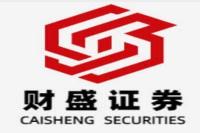Unlocking the December Market Surge: A Deep Dive into China's Economic Outlook
Meta Description: China's economic outlook, December market predictions, policy signals, institutional investor confidence, consumer stimulus, real estate market analysis, RMB stability, and investment strategies for a potential year-end rally.
Wow! Are you ready to ride the wave of a potential market upswing? December in China's financial landscape is shaping up to be a pivotal month, brimming with possibilities – and potential pitfalls. This isn't just another market prediction; it's a deep dive based on extensive research, expert analysis, and a keen understanding of the intricate interplay between policy, economics, and investor sentiment. We'll dissect the key factors influencing the market, providing you with actionable insights and strategies to navigate the coming weeks. Forget vague generalizations – we'll uncover the hidden nuances, explore the potential upside, and, importantly, acknowledge the risks. This isn't just about numbers; it's about understanding the human element driving the market, the hopes and fears shaping investment decisions. Get ready to decipher the signals, anticipate the trends, and position yourself for success in the exciting, volatile world of Chinese finance. Let's demystify the upcoming market movement and arm you with the knowledge you need to make informed decisions. This isn’t just about making money; it’s about understanding the bigger picture and capitalizing on opportunities in the dynamic Chinese market.
Policy Signals: The Engine of Market Confidence
The upcoming December Central Economic Work Conference (CEWC) is the undisputed star of the show. While it won't explicitly lay out the fiscal deficit or GDP targets, the tone and guidance are crucial. Expect a decidedly proactive stance – think "aggressive fiscal policy" – with a focus on boosting consumer spending. This is HUGE. Previously, institutional investors adopted a rather cautious approach, but the increased optimism from a more active fiscal policy could change the game, creating a substantial upside for these investors compared to the already-bullish active funds. This isn't just about throwing money at problems; it's about strategically stimulating specific sectors – think expanded scope for "old-for-new" programs, potentially extending to consumer electronics, and enhanced social welfare programs targeting vulnerable groups. However, let’s be realistic – the initial impact might be gradual, given the complexities of China's tax system and potential implications for budget balancing and RMB stability. A phased approach is likely, requiring patience and confidence from investors.
Institutional Investor Sentiment: A Shift in the Power Dynamic
For a while now, institutional investors have been a bit…underwhelmed. Various factors contributed to this, including some firms hitting their performance targets and cashing out early, along with redemption pressures on active funds. But the core issue was a lingering cautious outlook on policy. Interestingly, when positive policy expectations surge, it's often speculative stocks that benefit, while institutionally-heavy stocks experience a "buy the rumor, sell the news" pattern. This creates a fascinating dynamic: while speculative sectors might initially jump, institutionally-held stocks that are fundamentally strong may actually be undervalued. The December CEWC presents a huge opportunity to change this. If the positive policy signals materialize, it could dramatically shift the market's pricing power, giving institutional players a stronger voice and potentially leading to significant appreciation in fundamentally sound, albeit currently undervalued, stocks.
Economic Data: A Steady Climb Towards Recovery
The November manufacturing PMI (Purchasing Managers' Index) at 50.3 signals a slight uptick, exceeding expectations and past trends. This is a positive sign, although the construction sector still lags due to local government debt concerns. The anticipated boost from "old-for-new" policies and a "grab for exports" strategy should support a steady economic recovery in Q4. While volume indicators are expected to improve, price pressures, as measured by CPI (Consumer Price Index) and PPI (Producer Price Index), are likely to remain subdued for now. This signifies a period of stabilization rather than explosive growth – a crucial aspect for investors to understand.
The Real Estate Market: Signs of Stabilization
The real estate sector is a key barometer of the Chinese economy. While some tier-1 cities show signs of stabilization and even slight price increases, a broad-based recovery remains elusive and requires further policy support. The market is complex, with variations across cities. While increased transactions suggest a possible shift, this doesn't automatically translate to a sustained price surge. The data needs careful interpretation – it’s a gradual process, not a quick fix.
External Factors: Navigating Global Uncertainty
Geopolitical risks, particularly concerning potential US tariff increases under a Trump administration, have created some market jitters. However, the initial shock seems to have been absorbed, and the RMB (Renminbi) is showing signs of stabilization. While the threat of future tariffs remains, the immediate impact is likely less severe than initially feared. This does not mean ignoring the risks; rather, it highlights that short-term market reactions may not accurately reflect long-term economic fundamentals.
Market Convergence: A Symphony of Investors
December could witness a powerful convergence: institutional investors adjusting their previously cautious outlook, the influx of insurance funds seeking higher returns, and active funds continuing their momentum. This confluence of forces could catalyze a year-end rally. The key is to focus on high-quality, undervalued stocks – those poised to benefit from long-term growth and policy support.
Investment Strategies: Positioning for Success
The best approach is a balanced one. Consider a mix of value and growth stocks, with a focus on sectors expected to benefit from policy support and long-term economic trends. Potential areas to explore include the automatic driving industry chain, AI-driven consumer electronics, internet and new retail sectors, undervalued cyclical stocks (like aluminum, copper, major state-owned banks, and real estate developers), and companies with strong fundamentals and growth potential despite short-term market volatility.
Frequently Asked Questions (FAQs)
Q1: Is this market rally guaranteed?
A1: No, market movements are never guaranteed. While the outlook is positive, several factors could impact the trajectory. Geopolitical events, unexpected policy shifts, or a slowdown in economic recovery could all affect the market.
Q2: What are the key risks to consider?
A2: Key risks include escalating US-China trade tensions, slower-than-expected economic recovery, tighter global liquidity, and unforeseen geopolitical events.
Q3: How long might this market rally last?
A3: This is difficult to predict. A year-end rally might extend into early 2024, but its duration depends on various factors, including policy effectiveness and economic data.
Q4: Should I invest all my money now?
A4: No, it's always best to diversify your investment portfolio and avoid putting all your eggs in one basket. A well-diversified strategy mitigates risk.
Q5: What kind of stocks should I focus on?
A5: Prioritize companies with strong fundamentals, growth potential, and exposure to sectors likely to benefit from government policies and broader economic trends.
Q6: How can I stay updated on market developments?
A6: Regularly review reputable financial news sources, economic reports, and analyst commentary to stay informed about market trends and potential risks.
Conclusion: A Cautiously Optimistic Outlook
December presents both significant opportunities and potential challenges for investors. While the confluence of positive policy signals, potential economic recovery, and shifting investor sentiment paints a promising picture, it's crucial to approach the market with a balanced perspective, acknowledging the inherent risks. Thorough due diligence, diversification, and a clear understanding of the underlying economic and political forces are essential for navigating this dynamic environment. By carefully considering these factors and adapting your investment strategy accordingly, you can position yourself to potentially capitalize on the market's potential upswing. Remember, informed decisions are the cornerstone of successful investing. Good luck!



